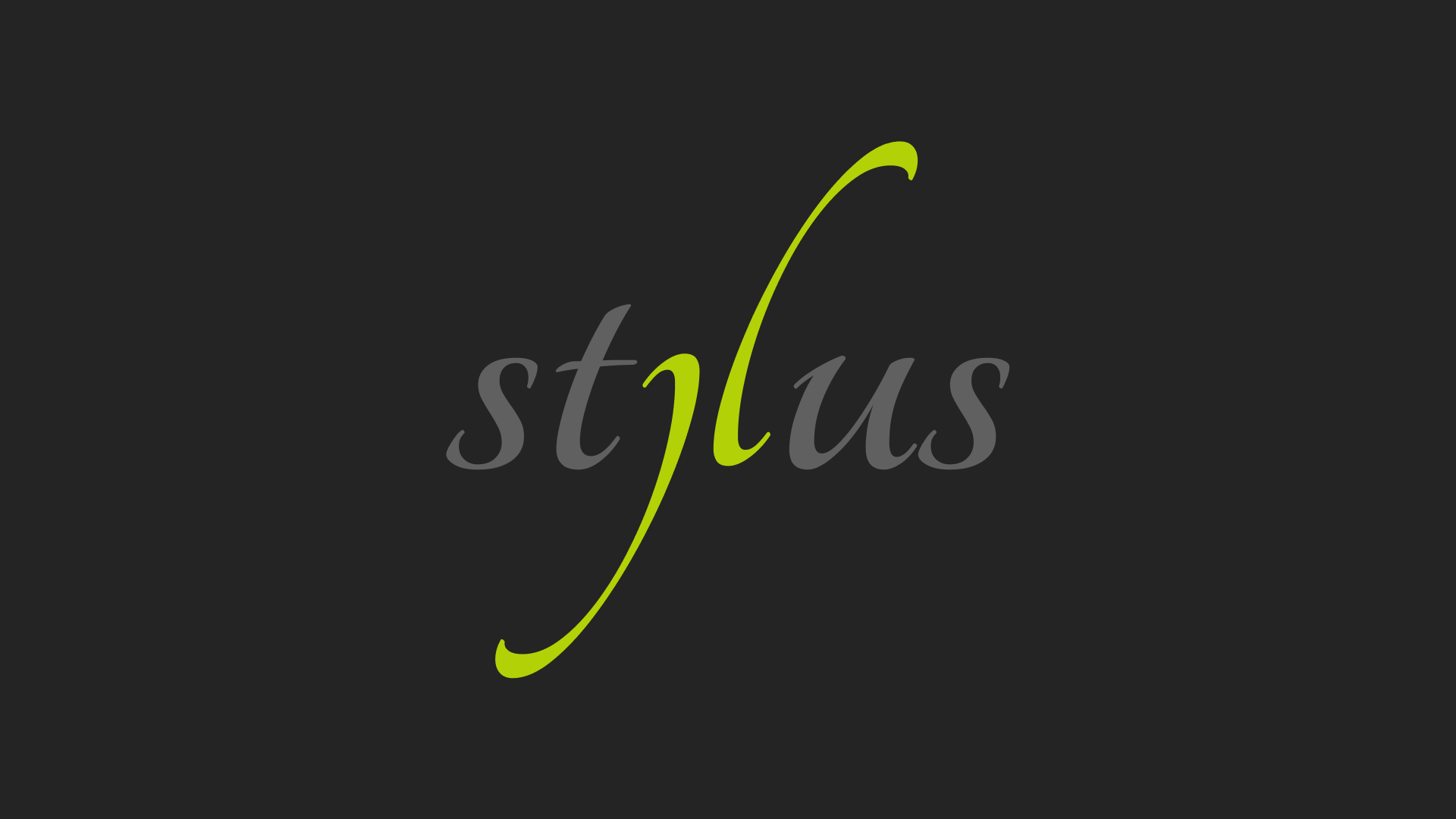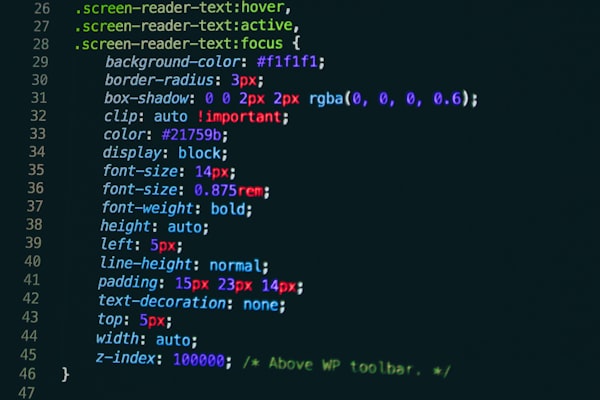Introduction: Stylus, the Unseen Hero of CSS
Picture a world where superheroes are unassuming, quiet, but pack a mean punch when needed. That's Stylus for you. It's like the Clark Kent of CSS preprocessors, seemingly ordinary, but with a cape hidden under the suit. Stylus might not be the one signing autographs at comic conventions, but it's definitely the one saving the day when you're buried under a pile of repetitive CSS coding.
Stylus doesn't need flashy banners or loudspeakers. Instead, it thrives on the sidelines, working its magic unnoticed. It's like the stagehand who ensures the play goes on smoothly, even though the audience only sees the actors. It's the silent ally, the humble helper, that one friend who's always there for you, even at 3 a.m. So, let's unravel the mystery of Stylus, the unseen hero of CSS, one layer at a time.
Understanding Stylus: The Basics of a CSS Preprocessor
Welcome to Stylus 101. Think of Stylus as your personal CSS chef. You provide the ingredients in any order you like, and Stylus whips up a scrumptious CSS meal, perfectly cooked and ready to serve. You don't need to stick to a recipe; you're free to experiment. Stylus will take care of the rest.
With Stylus, you can declare variables, nest selectors, create functions, and much more. It's like having a Swiss Army knife for CSS. And the best part? You can ignore the grammar rules. Drop the braces, semicolons, and colons. It's like coding in your pyjamas, casual and comfy!
Stylus vs. Others: Why Choose the Underdog
Why Stylus, you ask? Well, why do we cheer for the underdog in movies? Why do we love stories where the unlikely hero triumphs? It's because they surprise us, and in the world of CSS preprocessors, Stylus is full of surprises.
In a world dominated by Sass and Less, Stylus is like the quiet kid who comes out of nowhere to win the spelling bee. It's the dark horse that races ahead when you least expect it. Choosing Stylus is like betting on the joker in a pack of cards. It might not be the obvious choice, but it sure adds an exciting twist to the game.
The Language of Stylus: Translating CSS Syntax into Stylus
Learning Stylus is like learning a new language, but without the tongue-twisting pronunciation. It's all about understanding the syntax, and boy, is it a breath of fresh air!
It's like going from writing a formal letter to casual texting. Those rigid CSS rules? Toss them out. Stylus is here with its relaxed syntax, ready to make your coding life easier. Who knew coding could feel like a walk in the park?
Stylus Superpowers: Functions and Mixins
Ever wish you had superpowers? Well, Stylus does! With its powerful functions and mixins, Stylus can leap tall buildings in a single bound... metaphorically speaking, of course.
Functions and mixins are like your personal coding minions, ready to do your bidding. Need to reuse a piece of code? Call a mixin. Need to perform a calculation? Call a function. It's like having a team of superheroes at your disposal, each with their own unique power.
Inheritance in Stylus: The Genes of Style
In Stylus, styles can inherit properties from other styles, just like you inherited your great-grandmother's nose or your uncle's uncanny ability to wiggle ears. Stylus takes the concept of family traits and applies it to CSS.
Imagine you have a group of elements, all wearing plain white shirts. But you want one to stand out, so you give it a red scarf (a different property). With Stylus, you can do this easily using inheritance, without having to describe the white shirt all over again for the red-scarf-wearer.
Inheritance in Stylus keeps your code DRY (Don't Repeat Yourself), like a humorless professor insisting you get to the point. It makes your code more organised and saves you from the headache of juggling multiple CSS properties.
Stylus in Action: Practical Examples of Stylus Coding
Time to get our hands dirty! We’re trading in the theoretical paintbrush for a practical wrench. Stylus coding, we're ready to roll!
To start with, let's declare some variables. In Stylus, it's easier than naming your goldfish. Here's how you do it:
fontColor = #FF6347
backgroundColor = #FAEBD7
Next, we move on to the magic of mixins. Mixins in Stylus are like your favourite sandwich, you can use them over and over again without getting bored. Here's a quick example:
border-radius(n)
-webkit-border-radius n
-moz-border-radius n
border-radius n
.box
border-radius(5px)
This little mixin will add a border-radius to any element you want. It's like a VIP pass to the border-radius club!
Now, onto nesting. In Stylus, nested selectors are as snug as a bug in a rug. Let's say we want to style a list and its items. Here's how we can do that in Stylus:
list
margin: 0
padding: 0
li
list-style: none
border-bottom: 1px solid #ddd
In this example, the li selector is nested inside the list selector. It's like a cozy little house for your li elements.
Coding with Stylus is like a walk in the park. Just remember, practice makes perfect. So, keep playing around with Stylus until you're strutting around the CSS world like a catwalk model!
Stylus' Best Practices: Ensuring a Smooth Stylus Experience
Imagine you're a conductor, poised before a symphony of code. Your baton? Stylus. Your sheet music? CSS. But to make beautiful music, you need to know the ins and outs of the composition. That's where Stylus best practices come in.
First off, keep your code DRY (Don't Repeat Yourself). It's like an echo in a canyon - cool the first time, but increasingly annoying the more it happens. If you find yourself typing out the same lines of code, wrap them up into a function or mixin. It's like wrapping up leftovers for tomorrow's lunch - a bit of extra work now, but a timesaver down the line.
Secondly, organisation is key. Think of your code like a bookshelf - you wouldn't just toss books on there willy-nilly. You'd sort them by genre, author, or whether or not they have a dragon on the cover. Similarly, in Stylus, separating your code into different files or sections can make all the difference.
Finally, beware the nesting trap. Sure, it's tempting to nest your code like Russian dolls, but too much nesting can turn your CSS into a labyrinth. Remember, even Theseus needed a ball of yarn to find his way out of the Minotaur's maze.
Future of Stylus: The Evolution of the Sass-less Sassiness
Gazing into the future of Stylus is a bit like peering into a crystal ball. The images are hazy, the specifics uncertain, but oh, the potential is exhilarating. Currently, Stylus might be that underrated indie band, but it's all set to become the next big sensation on the CSS music charts.
The charm of Stylus lies in its easy-going syntax and its ability to add a dash of excitement to the otherwise mundane CSS coding. It's like adding hot sauce to your tacos. And as more and more developers crave that spice, Stylus is bound to go places.
As the world of web development evolves, Stylus is poised to evolve right along with it. Its flexible syntax makes it adaptable, like a chameleon on a rainbow. Whether it's handling new CSS features or integrating with emerging JavaScript frameworks, Stylus can potentially take it
Conclusion: Embracing the Stylus Style in Your CSS World
As we reach the end of our Stylus journey, it's clear that Stylus isn't just a CSS preprocessor. It's an attitude, a lifestyle, a way of adding that extra zing to your CSS. It's like swapping your regular old socks for a pair with funky patterns – same function, but way more fun.
Whether you're a code ninja or a rookie just starting, Stylus has something for everyone. Its intuitive syntax, powerful features, and flexible approach make it a worthy companion on your CSS journey. So, why not take Stylus for a spin? It's like test-driving a fancy car - you might just fall in love with the ride.
So here's to Stylus, the silent workhorse of CSS preprocessing. May its journey from the sidelines to the limelight be as thrilling as a rollercoaster ride. With Stylus, the future of CSS looks more exciting than a sci-fi movie marathon. Buckle up, folks, because the Stylus revolution is just getting started!








